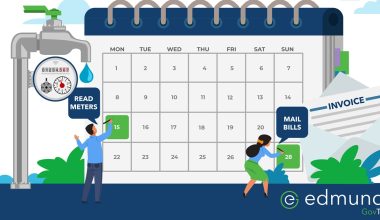A previous post dealt with improving final bill collection rates. So how do you know if your efforts are paying off?
In the final issue of last year, I solicited ideas for newsletter topics. Thanks to a couple subscribers, I got several good ideas. One of those asked about bench-marking collection rates for final bills.
Review your aging report
Provided your billing software offers an aged trial balance, or some other aging report, using the totals from this report can provide an effective way of tracking the success of your final bill collection rate.
If your utility bills monthly, and you have any semblance of a cut-off policy, it’s safe to assume any outstanding balances over 60 days old are final billed accounts that haven’t paid.
Do you have balances over 60 days old that are still active accounts? If so, you may want to review your utility’s days of exposure.
Calculate your delinquent receivables percentage
Calculate the percentage of your accounts receivable that is delinquent by dividing the sum of 60 day and 90 day arrears by the total accounts receivable.
Track your trends
If you compute your delinquent receivables percentage over the course of several years, you can plot this on a graph and observe the trend line.
If it is trending downward, congratulations! Your final bill collection rate is improving.
Take write-offs and debt set-offs into account
If you write off seriously delinquent accounts on an infrequent basis (for example, once a year) be sure to take this into account. For obvious reasons, your delinquent receivables percentage will drop significantly immediately following a write-off.
Likewise, for utilities in states with debt set-off programs, if you are aggressive in pursuing debt set-off collections, you will see a sizable increase in delinquent collections in March and April.
Following the trend over the course of several years will help offset the impact of write-offs and debt set-off collections.


